Bayern Munich History- All about the Club
Bayern Munich is an acclaimed football club that has an extensive history that dates back over a century. Established in 1900, the club has become a leading and successful force in global football, with a record of winning several national and international titles throughout the years.
Starting from its modest beginnings in Bavaria, Germany, to its present position as a dominant global entity, Bayern Munich has captivated the hearts of football fans worldwide with its appealing playing style, renowned players, and devoted supporters.
This article will investigate the compelling Bayern Munich history, exploring its early stages, its progress to fame, and its path toward being one of the most significant football clubs ever. Whether readers are die-hard fans of Bayern Munich or casual enthusiasts of football, this comprehensive article will offer them an inclusive summary of the club’s history and reputation.
Bayern Munich History
You’re in the right place if you have been looking for a complete article about Bayern Munich History and everything related to the club. We will talk about Bayern Munich badge history, Bayern Munich Champions League history, Bayern Munich kit history, Bayern Munich logo history, Bayern Munich jersey history, Bayern Munich honors, Bayern Munich trophies history, Bayern Munich mascot history, Bayern Munich Stadiums, Bayern Munich Rivalries history, and Bayern Munich managers history to give a very comprehensive coverage about the football team.
The Creation of the Club in the 1900s
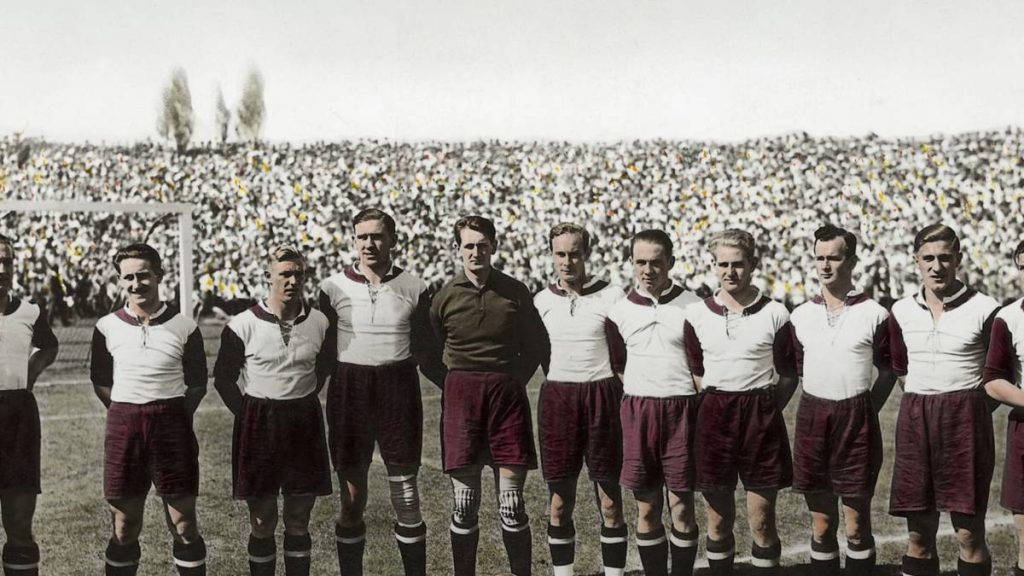
The origins of Football Club Bayern Munchen lie in the disagreement of members of MTV 1879 over the exclusion of footballers from joining the German Football Association. In response, eleven members of the football division founded Bayern Munich on the same evening of the decision. The club quickly achieved local success and won its first South German championship in 1926, followed by its first national title in 1932.
However, the rise of Adolf Hitler’s regime put an end to the club’s progress, with its Jewish president and coach forced to leave the country. Bayern struggled to maintain its status as a top contender for the national title during the years of mid-table results in its regional league. After the end of World War II, Bayern became a member of the Oberliga Sud and struggled financially, nearly facing bankruptcy.
However, the club regained its stability under the leadership of Roland Endler, and in 1963, it was promoted to the newly formed Bundesliga after fielding a team of young talents like Franz Beckenbauer, Gerd Muller, and Sepp Maier, who later became known as the axis.
The Golden Period, From 1965 to 1979
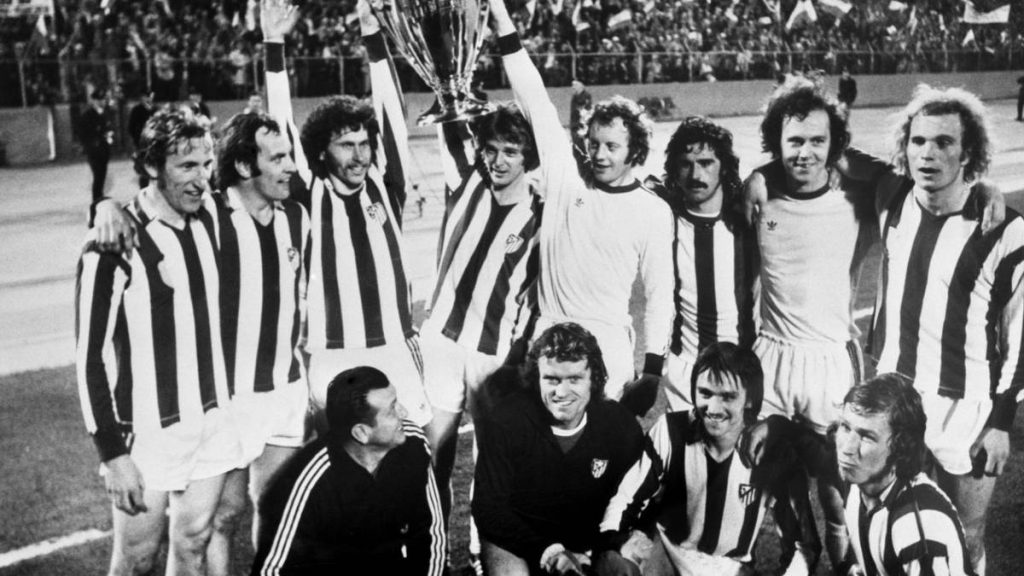
Bayern Munich history is a rich one, marked by many noteworthy achievements in both domestic and international competitions. In their debut Bundesliga season, the team placed third and clinched the DFB-Pokal, which paved the way for their successful run in the following year’s European Cup Winners’ Cup, where they emerged as champions in a nail-biting final against Rangers, thanks to the decisive goal from Franz Roth in extra time.
Branko Zebec, who took over as coach, helped Bayern obtain their second DFB-Pokal win in 1967 before guiding the team to their first-ever league and cup double in 1969. Udo Lattek succeeded Zebec in 1970 and oversaw Bayern’s third German championship victory, including a groundbreaking live televised match in Bundesliga history against Schalke 04. Bayern’s success in the 1974 European Cup Final against Atletico Madrid was a significant milestone in their international journey.
Bayern continued their dominance in European competitions, securing consecutive European Cup Final wins against Leeds United and Saint-Etienne, as well as an Intercontinental Cup triumph over Cruzeiro.
However, the remainder of the decade was marked by several changes and the departure of key players, including Franz Beckenbauer, Sepp Maier, Uli Hoeneb, and Gerd Muller. The term “Bayerndusel” was coined during this period, characterizing the team’s tendency to secure last-minute victories in either an envious or contemptuous manner.
From 1979 to 1998, Many Changes to Come
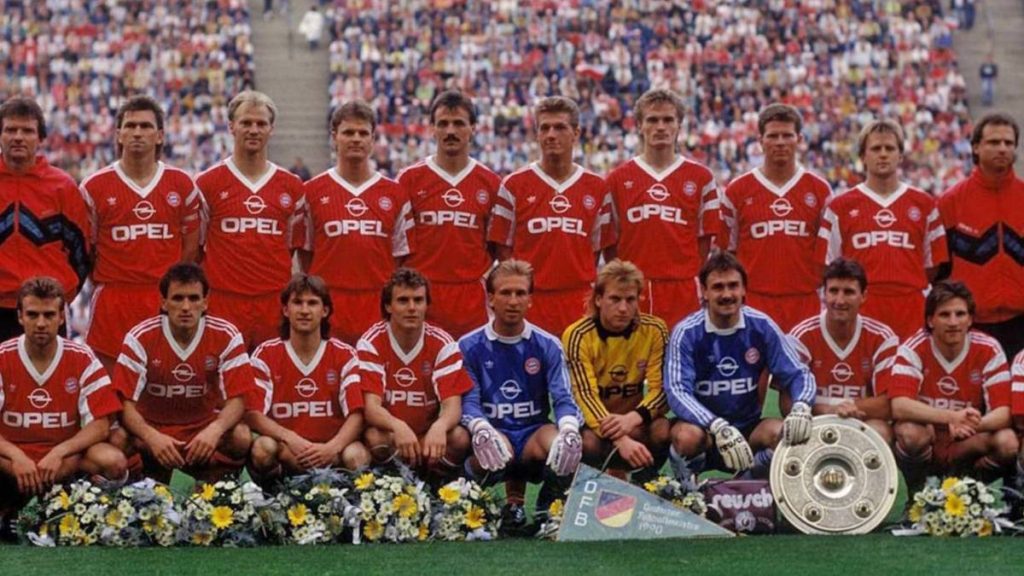
Bayern Munich history in the 1980s was marked by off-field turmoil and financial problems, with significant personnel changes taking place. However, the team managed to win two Bundesliga titles in 1980 and 1981 under the leadership of Paul Breitner and Karl-Heinz Rummenigge, known as FC Breitnigge.
After some relatively unsuccessful seasons, including Breitner’s retirement and Udo Lattek’s return as coach, Bayern managed to win the DFB-Pokal in 1984 and five Bundesliga championships in six seasons, including a double in 1986. Despite this domestic success, the team struggled to achieve European success, finishing as runners-up in the European Cup in 1982 and 1987.
In the late 1980s and early 1990s, Bayern experienced a period of fluctuating form, with Jupp Heynckes leading the team to two consecutive championships before a dip in form that saw the team narrowly avoid relegation. Success returned briefly under Franz Beckenbauer’s leadership in the mid-1990s, with the team winning the championship again after a four-year gap and Beckenbauer becoming club president.
However, subsequent coaches Giovanni Trapattoni and Otto Rehhagel failed to meet the club’s high expectations, with the team’s players attracting more attention for their off-field antics than their on-field performances, leading to the nickname FC Hollywood. Beckenbauer returned briefly as caretaker coach in 1996, leading the team to victory in the UEFA Cup before Trapattoni returned to win another championship in 1997. However, the team lost the title to 1. FC Kaiserslautern the following season, and Trapattoni left the club for the second time.
Good Times, From 1998 to 2007
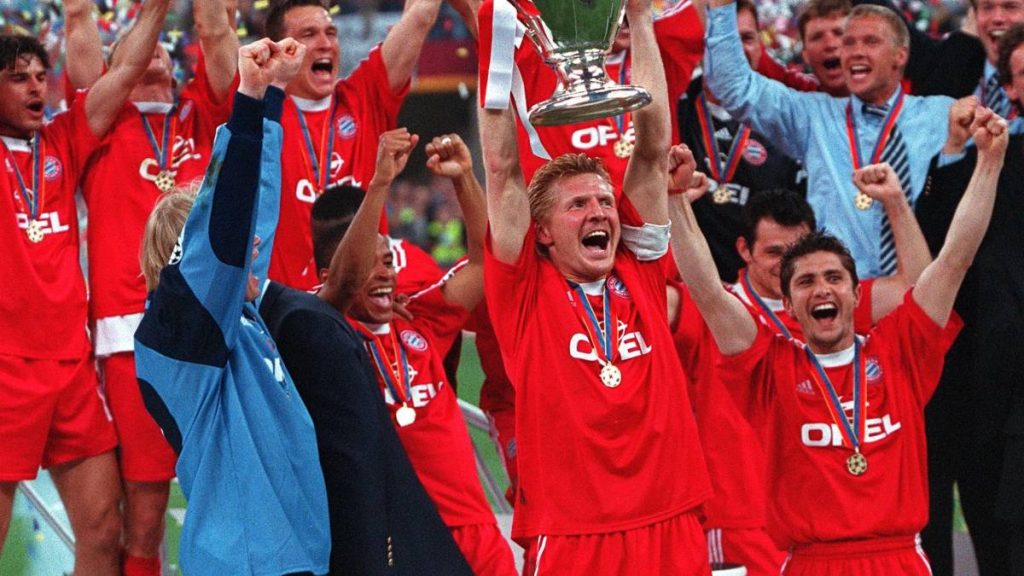
In Bayern Munich history, Ottmar Hitzfeld coached the team from 1998 to 2004 and led them to great success. In Bayern Munich trophies history, under Ottmar leadership, Bayern won the Bundesliga title in his first season and narrowly missed out on winning the Champions League the same year. They went on to secure their third league and cup double in the club’s centenary season and won a third consecutive Bundesliga title the following year.
Bayern Munich Champions League history tells us that the team won the Champions League for the fourth time after a 25-year gap, defeating Valencia on penalties. Hitzfeld’s reign ended in 2004 with Bayern underperforming, but they bounced back under Felix Magath, who led the team to two consecutive doubles. Despite Hitzfeld’s return in 2007, Bayern finished the season in fourth place, failing to qualify for the Champions League for the first time in over a decade.
Back to the Top, From 2007 to 2019
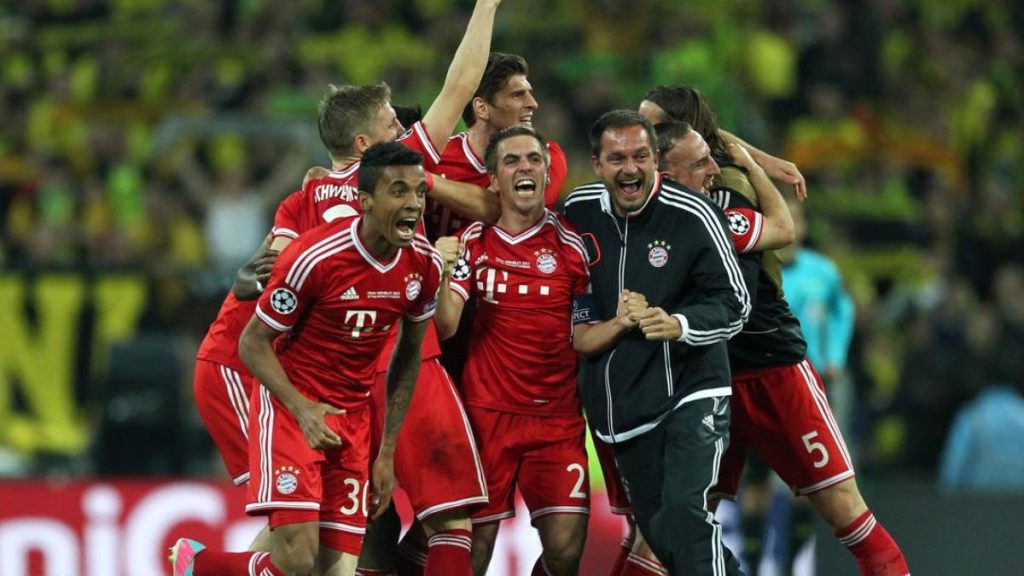
Bayern Munich history includes significant changes to their squad ahead of the 2007-08 season by signing eight new players and selling, releasing, or loaning out nine of their players. New signings included stars like Franck Ribery, Miroslav Klose, and Luca Toni, which led Bayern to win the Bundesliga convincingly and the DFB-Pokal against Borussia Dortmund.
Oliver Kahn, the club’s long-term goalkeeper, retired, and Jurgen Klinsmann was chosen as the new coach. However, he was sacked before the end of his first season due to poor performance, and Jupp Heynckes was named caretaker coach. Dutch manager Louis van Gaal and Dutch forward Arjen Robben joined Bayern in 2009-10, leading to the club’s most successful season since 2001, something to keep in mind in Bayern Munich managers history.
Bayern won the domestic double but lost in the final of the Champions League to Inter Milan 0-2. Bayern went on to win all titles in the 2012-13 season, setting various Bundesliga records and becoming the first German team to win the treble, one of Bayern Munich honors.
The club completed their tenth domestic double in the 2014-15 season, including another double in 2015-16, but failed to advance past the semi-finals in the Champions League. Despite the club’s efforts to keep him, coach Guardiola decided not to extend his three-year contract.
The Assistant Coach Everyone Wishes For, From 2019 to Present Time

Hansi Flick became a part of Bayern Munich history after joining the team as an assistant coach in July 2019. Flick was promoted to interim manager when the team struggled under Kovac and eventually parted ways. After proving himself, he was announced as the permanent coach until the end of the season. Under his guidance, the team won the league and the cup, as well as reaching the final of the Champions League, where they emerged victorious.
This achievement made them the second European club to complete the seasonal treble in two different seasons, matching FC Barcelona’s 2014-15 team. Bayern started the new season by winning the UEFA Super Cup and 2020 DFL-Supercup, followed by the 2020 FIFA Club World Cup, where they won the sextuple.
Although they failed to defend their Champions League title, they managed to win their 9th Bundesliga title in a row, with Robert Lewandowski breaking the record for most goals scored in a Bundesliga season. Flick announced his departure from Bayern at the end of the season and went on to take charge of the German national team, which he had previously assisted under manager Joachim Low.
Bayern Munich managed to secure their 10th consecutive Bundesliga title by beating their rivals 3-1, with Julian Nagelsmann as their new coach. Nonetheless, they suffered an unforeseen loss to Villarreal in the quarter-finals of the Champions League, marking their second consecutive exit at this level.
Bayern Munich Kit History
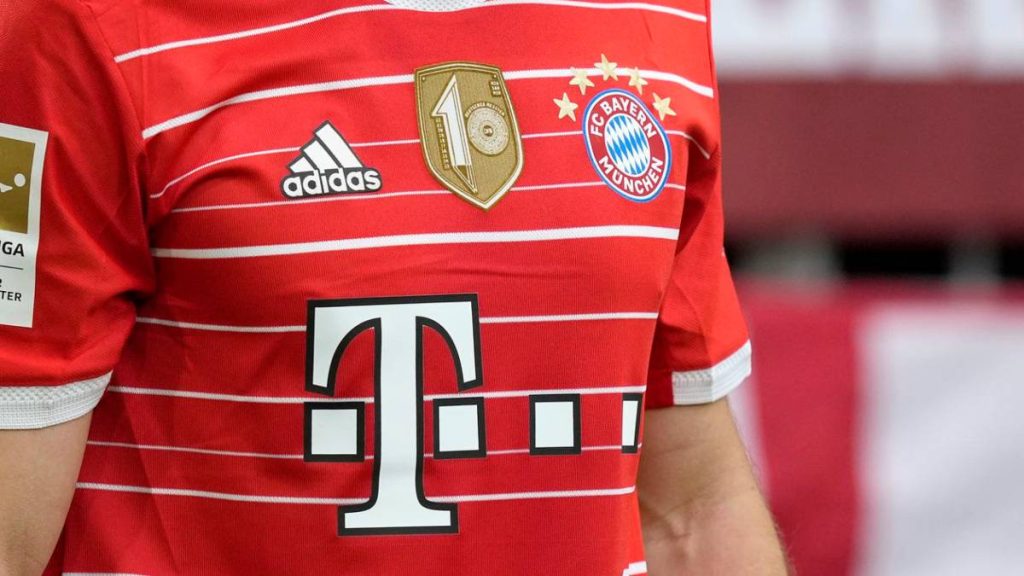
Initially, Bayern Munich’s colors were listed as white and blue in their original club constitution. However, the team played in white shirts with black shorts until 1905, when they joined MSC. MSC mandated that the footballers wear red shorts, and also, younger players were labeled “red shorts” as an insult. Bayern primarily wore white and maroon home kits for most of their early history. In 1968-69, Bayern switched to red and blue striped shirts with blue shorts and socks.
Bayern Munich jersey history shows that from 1974 onwards, Bayern predominantly wore an all-red home kit with white trim. However, they revived the red and blue striped color scheme between 1995 and 1997 and returned to a predominantly red kit with blue sleeves in 1999.
Bayern has also worn a range of away kits over the years, including white, black, blue, and gold-green, as well as a distinct international kit with various designs such as a Bavarian flag diamond watermark pattern, a Lederhosen-inspired white and black Oktoberfest away kit, and an all-navy blue international kit. In the 1980s and 1990s, Bayern wore a special away kit featuring the Brazilian colors blue and yellow when playing at 1. FC Kaiserslautern, as it was believed to bring them good luck.
Bayern Munich Badge History
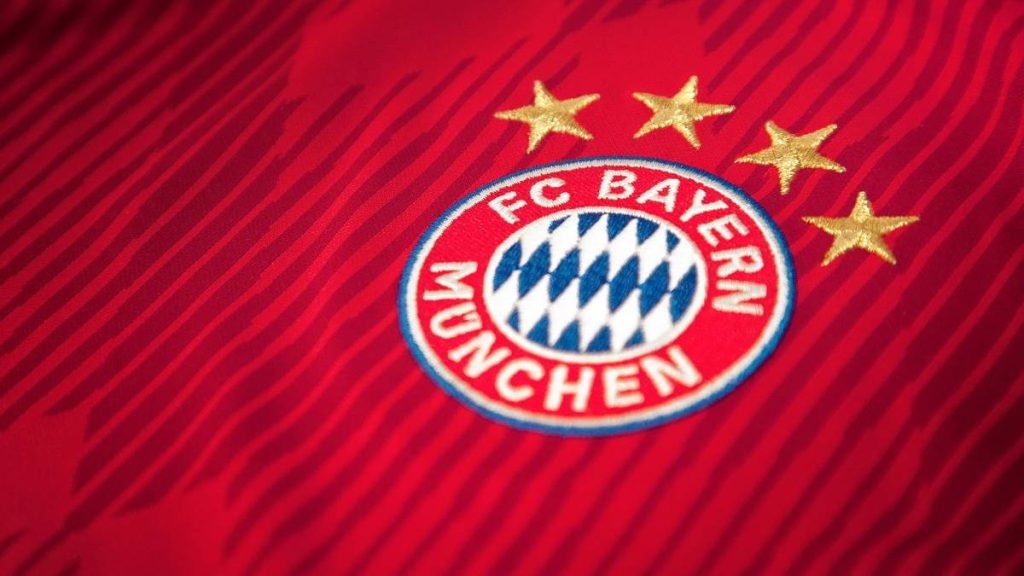
Bayern Munich’s crest has undergone several changes over the years. Initially, the crest featured the stylized letters F, C, B, and M woven into one symbol, with the original crest being blue. The colors of Bavaria were first included in the crest in 1954. From 1919 to 1924, the crest denoted “Bayern FA,” representing the football department of TSV Jahn Munich, which Bayern was integrated into at the time, an interesting fact in Bayern Munich history.
In Bayern Munich logo history, the modern version of the crest has undergone several changes since 1954. While the crest was mostly a single color, either blue or red, the current version includes blue, red, and white. The crest’s center features the colors of Bavaria, while “FC Bayern Munchen” is written in white on a red ring surrounding the Bavarian colors.
Their Fan Base
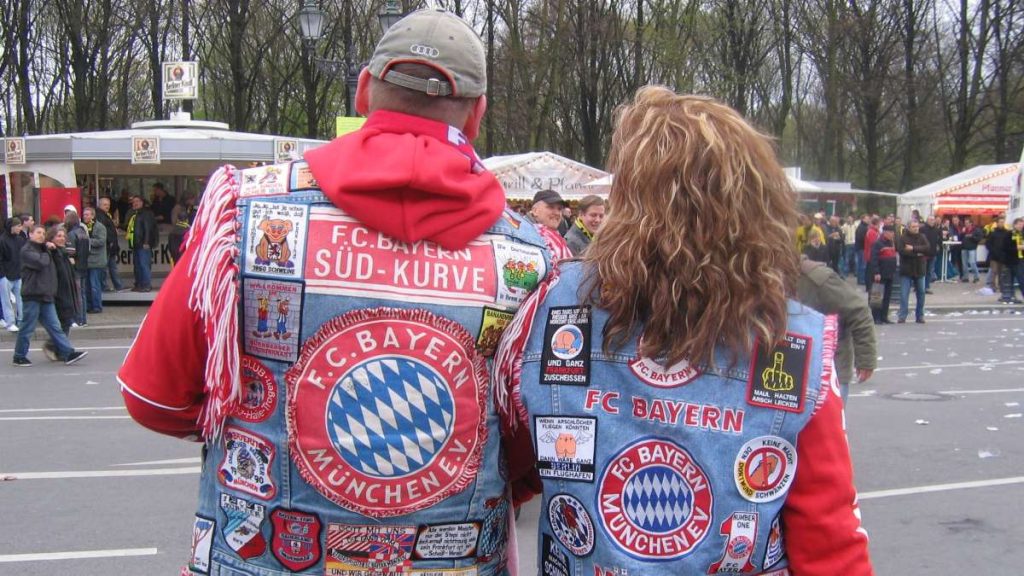
At the 2018 annual general meeting, the board of Bayern Munich reported that the club had an impressive 291,000 official members and over 390,000 members in 4,433 officially registered fan clubs, making it the largest fan membership club in the world. Due to the rich Bayern Munich history, the club’s popularity extends far beyond Germany, with fan club members traveling from as far as Austria and Switzerland to attend home games at the Allianz Arena.
The stadium regularly operates at 100% capacity, with an average of 75,000 attendees per game. Bayern Munich’s success on the field is well-known, having won numerous domestic and international titles. However, the club is also recognized for its well-organized ultra scene, with groups such as the Schickeria Munchen and the Inferno Bavaria taking a stance against discrimination and right-wing extremism.
The Red Ladies, Bayern Munich’s international all-female supporter club, boasts over 200 members and fosters a safe community for female fans. Bayern Munich’s catchphrase, “Packmas,” is a call to action, while its mascot, “Berni,” has been a beloved symbol of the club since 2004, something to keep in mind regarding Bayern Munich mascot history. Finally, the club counts among its high-profile supporters Pope Benedict XVI, Boris Becker, Wladimir Klitschko, Horst Seehofer, and Edmund Stoiber.
Bayern Munich Rivalries History

Bayern Munich history is filled with intense and exciting rivalries with other football clubs. The football club. One of their main local rivals is 1860 Munich, who was more successful than Bayern in the 1950s and was selected for the initial Bundesliga season in 1963, causing controversy. However, Bayern rose to prominence in the 1970s and 1980s, while 1860 Munich moved between the first and third divisions. Despite their rivalry, Bayern has provided support to 1860 Munich during financial struggles.
FC Nurnberg has been Bayern’s traditional rival in Bavaria since the 1920s, and their duels are often referred to as the Bavarian Derby. Bayern also has strong competition with 1. FC Kaiserslautern, with whom they have competed for German championship titles.
Borussia Dortmund is another notable rival, and the two teams have gone head-to-head in many Bundesliga matches and DFB-Pokal finals. Bayern has also faced off against Real Madrid, A.C. Milan, and Manchester United in classic matches throughout their history, with Real Madrid being one of their chief European rivals due to their many confronts in the Champions League/European Cup.
Despite their intense rivalry, Bayern has repeatedly supported 1860 Munich in times of financial difficulty. Bayern’s board members include many business leaders, and the club is seen as the establishment club, reflecting its dominance in German football. Bayern has faced strong challenges from various opponents over the years, including Borussia Monchengladbach, Hamburger SV, Werder Bremen, and Bayer Leverkusen. Nonetheless, Bayern remains one of the most successful and prominent football clubs in the world.
Bayern Munich Training Grounds
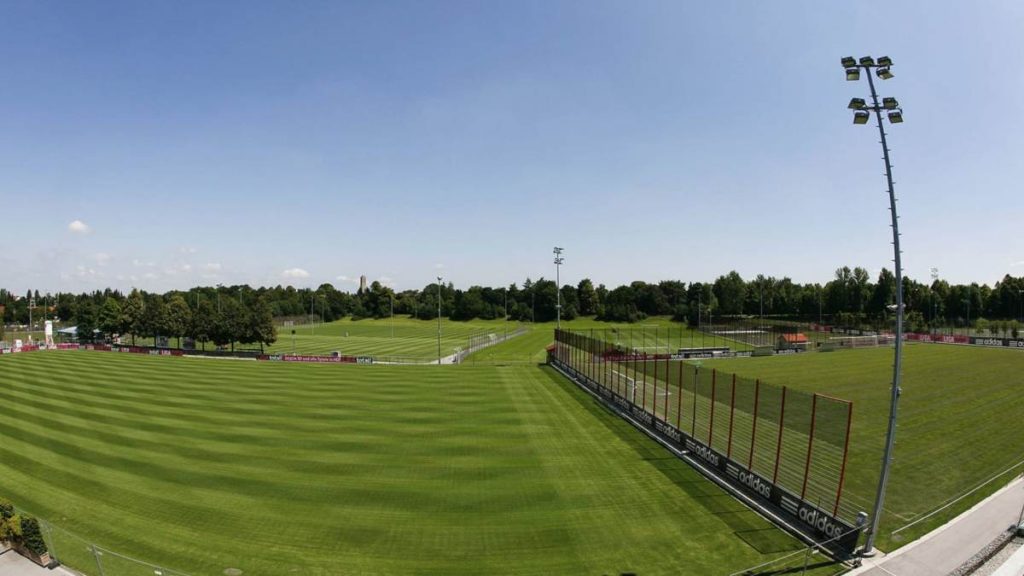
Bayern Munich history is steeped in a tradition of excellence, and their headquarters and training facility, Sabener Strabe, is a testament to their commitment to maintaining their status as one of the top football clubs in the world. The facility boasts five grass pitches, two of which have undersoil heating, two artificial grass fields, a beach volleyball court, and a multi-functional sports hall.
The players’ quarters, known as the performance center, were reconstructed in 2007-08 on the suggestion of then-new coach Jurgen Klinsmann and feature state-of-the-art fitness and training equipment, a massage unit, dressing rooms, the coaches office, and a conference room with screening facilities for video analysis. Additionally, the performance center includes a cafe, a library, an e-Learning room, and a family room.
Recognizing the need to compete with other German and European clubs at the youth level, Bayern purchased land near the Allianz Arena in 2006 with the intention of building a new youth academy. Overcoming internal resistance, the project began in 2015 and cost an estimated €70 million. The FC Bayern Campus, which opened in August 2017, is located north of Munich at Ingolstadter Strabe and covers 30 hectares.
It features eight football pitches for youth teams ranging from the U-9s to the U-19s and the women’s and girls’ teams, as well as a 2,500-capacity stadium where the U-17s and U-19s play their matches. The Allianz FC Bayern Akademie is also located on the campus site, offering 35 apartments for young talents who don’t live in the Greater Munich area, as well as offices for youth coaches and staff.
Bayern Munich Stadiums
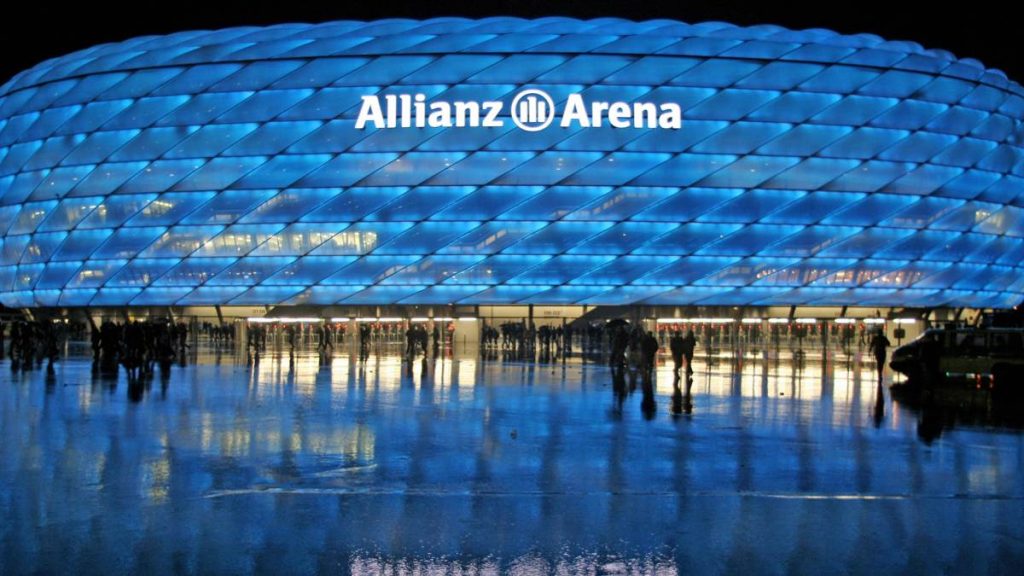
Bayern Munich history has seen the team move to various locations in Munich to play their home games. Their first training games were held at Schyrenplatz in the city center, followed by their official games at Theresienwiese. In 1901, Bayern relocated to their own field in Schwabing at Clemensstrabe. After joining the Munchner Sport-Club in 1906, Bayern moved to MSC’s ground at Leopoldstrabe in May 1907 due to increasing crowd sizes.
From 1925 until World War II, Bayern shared the Grunwalder Stadion with 1860 Munich, and the stadium’s capacity has since been reduced to 21,272. The Olympiastadion was then built for the 1972 Summer Olympics, and Bayern has since moved to the Allianz Arena, which has a capacity of 75,000 for national matches and 70,000 for Champions League matches.
The Grunwalder Stadion, owned by 1860 Munich until World War II, was the first stadium Bayern shared with another team. It was destroyed during the war and rebuilt, but its capacity has since been reduced. The Olympiastadion, built for the 1972 Summer Olympics, became home to Bayern until they moved to the Allianz Arena. The Allianz Arena is known for its translucent outer layer, which can be illuminated in different colors for impressive effects, and its capacity has increased over time.


Comments
Post a Comment